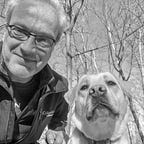Gearbag Archaeology: Rolleiflex
Dig into your photography gear bag (shelf, box, trunk) and see what you find at the very bottom. I guarantee there is stuff in there that you have deep history with, can’t part with it and to the outsider has zero value. Let’s spend some time celebrating this stuff instead of hiding it!
I’ll start with my Rolleiflex Model K8 T3 with a serial number that puts it into the 1966–1968 range. Its was my grandmother’s camera; she owned a successful portrait studio between ~1935–1968. During the war, the studio burned out a few times and when 75% of our city had been bombed flat, she’d be climbing over the ruins, taking pictures for the city newspaper. At least that’s what I have been told.
Post-war, she grew her business and bought this Rolleiflex, likely as a portrait and “walk around” camera. Apparently, she once had a shot published in “Life Magazine”, a phenomenal achievement for her time. Unfortunately, I can’t find any reference to that photo anywhere and I just want to believe that she used “my” camera for that.
I never met my grandmother, she passed away just after I was born. My mother inherited the camera and kept it in a closet until I asked if I could use it. Not only was I allowed to use it, it was mine if I paid for the professional restauration of it (several months allowance, if I recall correctly). So, it became my first real camera.
Now for those not familiar with this Rolleiflex, its a 6x6cm “medium format” model, each film roll holds 12 exposures, that’s it. The upper lens is for the viewfinder, the lower lens with aperture exposes the film. Because the two lenses are separate, the system has some parallax that matter at close range but not really when shooting architecture / landscape. There is no separate shutter, the aperture fulfils that role, so the camera is incredibly quiet and doesn’t vibrate at all on a tripod.
I used this camera a lot, mostly with Ilford Black & White film but occasionally with Kodak, the larger format really made a difference when comparing it with 35mm but mostly it was the square format that I loved; to this day, I crop many of my photos square.
Its a fun camera to use but it requires advanced knowledge of the scene, shooting while moving (like my grandmother undoubtedly had done) was / is / will always be beyond my skill.
Overall, I love this camera, it sits proudly on my shelf and reminds me of my family, my grandmother’s entrepreneurial, can-do attitude and the memories of teaching myself photography.
Thank you, Grandma for this amazing gift!
